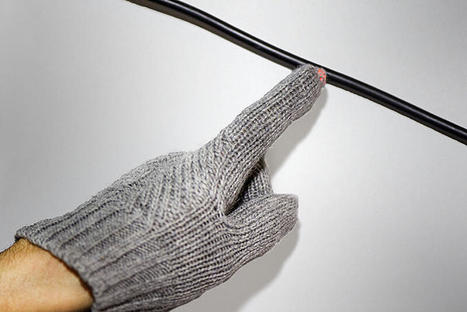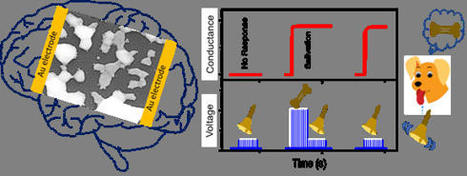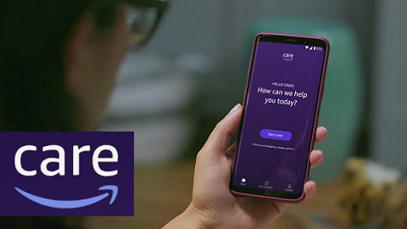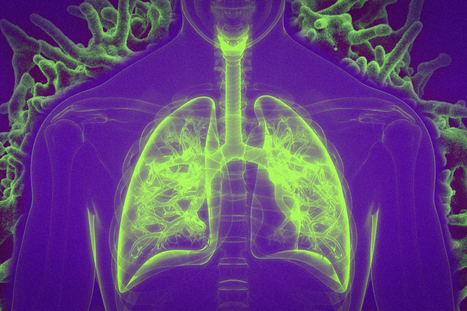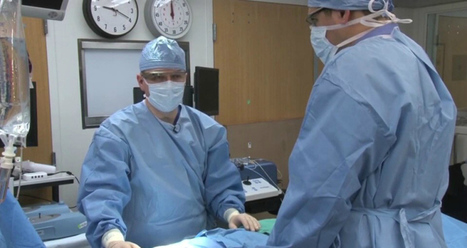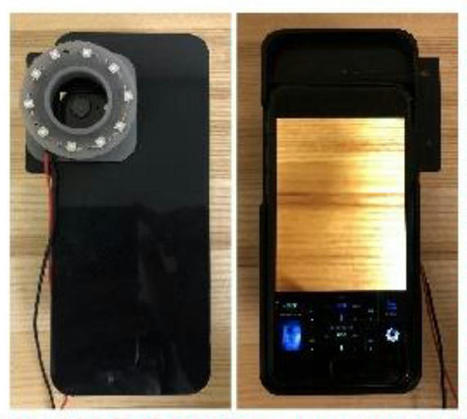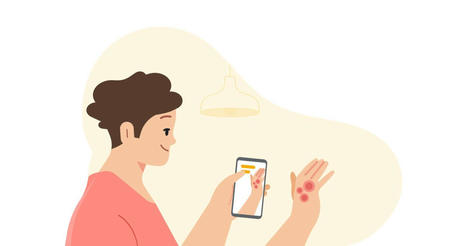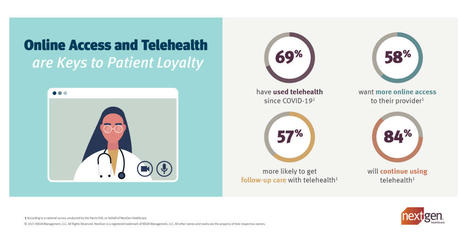 Your new post is loading...
 Your new post is loading...

|
Scooped by
nrip
|
Organoids, miniature and simplified in vitro model systems that mimic the structure and function of organs, have attracted considerable interest due to their promising applications in disease modeling, drug screening, personalized medicine, and tissue engineering. Organoids are three-dimensional structures that mimic the architecture and functions of various organs. They are grown in vitro from stem cells or other precursor cells and have been used to study the development and behavior of different organs, as well as for drug screening and disease modeling. Organoids are highly valued for their ability to recapitulate the complex microenvironments and functions of different organs, making them valuable tools for studying the mechanisms of disease and for testing potential treatment Despite the substantial success in cultivating physiologically relevant organoids, challenges remain concerning the complexities of their assembly and the difficulties associated with data analysis. The advent of AI-Enabled Organoids, which interfaces with artificial intelligence (AI), holds the potential to revolutionize the field by offering novel insights and methodologies that can expedite the development and clinical application of organoids. read this article which delineates the fundamental concepts and mechanisms underlying AI-Enabled Organoids, summarizing the prospective applications on rapid screening of construction strategies, cost-effective extraction of multiscale image features, streamlined analysis of multi-omics data, and precise preclinical evaluation and application.

|
Scooped by
nrip
|
Once, the prospect of manipulating the human mind with brain implants and radio beams ignited public fears that curtailed this line of research for decades. But now there is a resurgence using even more advanced technology. Laser beams, ultrasound, electromagnetic pulses, mild alternating and direct current stimulation and other methods now allow access to, and manipulation of, electrical activity in the brain with far more sophistication than the needlelike electrodes Manuel Rodriguez Delgado stabbed into brains. Billionaires Elon Musk of Tesla and Mark Zuckerberg of Facebook are leading the charge, pouring millions of dollars into developing brain-computer interface (BCI) technology. Musk says he wants to provide a “superintelligence layer” in the human brain to help protect us from artificial intelligence, and Zuckerberg reportedly wants users to upload their thoughts and emotions over the internet without the bother of typing. But fact and fiction are easily blurred in these deliberations. How does this technology actually work, and what is it capable of? Today’s BCI devices work by analyzing data, in much the same way that Amazon tries to predict what book you might want next. Computers monitoring streams of electrical activity, picked up by a brain implant or a removable electrode cap, learn to recognize how the traffic pattern changes when a person makes an intended limb movement. Advances in brain-computer interface technology are impressive, but we’re not close to anything resembling mind control. read this excellent essay at https://www.quantamagazine.org/how-brain-computer-interface-technology-is-different-from-mind-control-20210517/

|
Scooped by
nrip
|
Purdue University engineers have developed a method to transform existing cloth items into battery-free wearables resistant to laundry. These smart clothes are powered wirelessly through a flexible, silk-based coil sewn on the textile. In the near future, all your clothes will become smart. These smart clothes will outperform conventional passive garments, thanks to their miniaturized electronic circuits and sensors, which will allow you to seamlessly communicate with your phone, computer, car and other machines. This smart clothing will not only make you more productive but also check on your health status and even call for help if you suffer an accident. The reason why this smart clothing is not all over your closet yet is that the fabrication of this smart clothing is quite challenging, as clothes need to be periodically washed and electronics despise water. Purdue engineers have developed a new spray/sewing method to transform any conventional cloth items into battery-free wearables that can be cleaned in the washing machine. "By spray-coating smart clothes with highly hydrophobic molecules, we are able to render them repellent to water, oil and mud," said Ramses Martinez, an assistant professor in Purdue's School of Industrial Engineering and in the Weldon School of Biomedical Engineering in Purdue's College of Engineering. "These smart clothes are almost impossible to stain and can be used underwater and washed in conventional washing machines without damaging the electronic components sewn on their surface." read the study at http://dx.doi.org/10.1016/j.nanoen.2021.106155 read the original and unedited version of the article at https://phys.org/news/2021-06-wearables-future-washable-smart-powered.html

|
Scooped by
nrip
|
Researchers investigating the benefits of 3D printing technology found it can deliver significant improvements to the running of hospitals. The research, which compared the drawbacks and advantages of using 3D printing technology in hospitals, has been published in the International Journal of Operations and Production Management. The study revealed that introducing such technology into hospitals could help alleviate many of the strains the UK healthcare system and healthcare systems worldwide face. Boosting surgery success rates - 3D printing makes it possible for surgical teams to print 3D models based on an individual patient’s surgical needs, providing more detailed and exact information for the surgeon to plan and practice the surgery, minimising the risk of error or unexpected complications. - the use of 3D printed anatomical models was useful when communicating the details of the surgery with the patient, helping to increase their confidence in the procedure. Speeding up patient recovery time - significant reduction in post-surgery complications, patient recovery times and the need for subsequent hospital appointments or treatments. Speeding up procedures - provide surgeons with custom-built tools for each procedure, with the findings revealing that surgeries with durations of four to eight hours were reduced by 1.5 to 2.5 hours when patient-specific instruments were used. - could also make surgeries less invasive (for example, removing less bone or tissue) - result in less associated risks for the patient (for example, by requiring less anaesthesia). Real-life training opportunities - enables trainee surgeons to familiarise themselves with the steps to take in complex surgeries by practicing their skills on examples that accurately replicate real patient problems, and with greater variety. Careful consideration required Despite the research showing strong and clear benefits of using 3D printing, Dr Chaudhuri and his fellow researchers urge careful consideration for the financial costs. 3D printing is a significant financial investment for hospitals to make. In order to determine whether such an investment is worthwhile, the researchers have also developed a framework to aid hospital decision-makers in determining the return on investment for their particular institution. read the study at https://www.researchgate.net/publication/344956611_Accepted_for_publication_in_International_Journal_of_Operations_and_Production_Management_Should_hospitals_invest_in_customised_on-demand_3D_printing_for_surgeries read more at https://www.healtheuropa.eu/3d-printing-technology-boosts-hospital-efficiency-and-eases-pressures/108544/

|
Scooped by
nrip
|
Scientists have fabricated a device that can mimic human brain cognitive actions and is more efficient than conventional techniques in emulating artificial intelligence, thus enhancing the computational speed and power consumption efficiency. Artificial intelligence is now a part of our daily lives, starting from email filters and smart replies in communication to helping battle the Covid-19 pandemic. But AI can do much more such as facilitate self-driving autonomous vehicles, augmented reality for healthcare, drug discovery, big data handling, real-time pattern/image recognition, solving real-world problems, and so on. These can be realised with the help of a neuromorphic device which can mimic the human brain synapse to bring about brain-inspired efficient computing ability. The human brain comprises of nearly a hundred billion neurons consisting of axons and dendrites. These neurons massively interconnect with each other via axons and dendrites, forming colossal junctions called synapse. This complex bio-neural network is believed to give rise to superior cognitive abilities. Software-based artificial neural networks (ANN) can be seen defeating humans in games or helping handle the Covid-19 situation. However, the power-hungry (in megawatts) von Neumann computer architecture slows down ANNs performance due to the available serial processing while the brain does the job via parallel processing consuming just 20 W. It is estimated that the brain consumes 20% of the total body energy. From the calory conversion, it amounts to 20 watts. While the conventional computing platforms consume megawatts, i.e., 1 million watts of energy, to mimic basic human cognition. To overcome this bottleneck, a hardware-based solution involves an artificial synaptic device that, unlike transistors, could emulate the functions of human brain synapse. Scientists had long been trying to develop a synaptic device that can mimic complex psychological behaviors without the aid of external supporting (CMOS) circuits. To address this challenge, Scientists from Jawaharlal Nehru Centre for Advanced Scientific Research, Bengaluru, an autonomous institute of the Department of Science & Technology, Government of India, devised a novel approach of fabricating an artificial synaptic network (ASN) resembling the biological neural network via a simple self-forming method (the device structure is formed by itself while heating). This work has been recently published in the journal ‘Materials Horizons’. “Nature has had an incredible amount of time and diversity to engineer ever new forms and functions through evolution. Learning and emulating new processes, technologies, materials and devices from the nature and biology are the important pathways to the significant advances of the future which will increasingly integrate the worlds of the living with the man-made technologies,” said Prof Ashutosh Sharma, Secretary, DST. read the original unedited post at https://www.indianext.co.in/2021/06/scientists-develop-efficient-artificial-synaptic-network-that-mimics-human-brain/

|
Scooped by
nrip
|
A team of researchers has developed the first human "mini-hearts" in the lab to have clearly beating chambers. The miniature organs, or organoids, are no bigger than sesame seeds and were generated by self-assembly using pluripotent stem cells, according to Science Magazine. The organoids mimic the functioning heart of a 25-day-old human embryo, and they may help humans solve the heart's many mysteries. Our capability to model the complexity of the human heart in vitro is still limited, consequently limiting our knowledge of how heart diseases develop. Congenital heart defects, for example, are the most common birth condition in humans, affecting around 1 percent of all live births. This alone demonstrates the need to create more precise organ-like platforms, which is where the researchers come in, with their newly devised method which was described in a study published in the journal Cell. The researchers engineered human pluripotent stem cells, which can divide into any kind of tissue, into multiple forms of cardiac cells to create heart organoids whose cells self-organize like those in an embryo. The aim was to create three tissue layers that make up a heart chamber's walls, which are one of the first parts of the heart to form. The organoids, which are around 2 mm in diameter and have survived more than 3 months in the lab so far, become structurally equal to the heart of a 25-year-old embryo in a week. They only have one chamber and the main types of cells at this point of development. Moreover, the heart's clearly defined chamber beats 60 to 100 times a minute, much like the heart of an embryo at the same age. read the entire story at https://interestingengineering.com/lab-grown-mini-heart-beats-like-a-25-day-old-human-embryos-heart

|
Scooped by
nrip
|
The pandemic has accelerated some trends here, notably telemedicine. That’s given a healthy push to an emerging field – remote diagnostics. Your phone is gradually – with some extensions – turning into a remote diagnostic tool to replace doctor visits and expensive tests. That’s fairly well known, even if it is extraordinary: blood oxygen levels are captured by a device costing less than $20, while an always-on cardiac monitor tracks heart activity, for example. But that’s just the very tip of the iceberg. Remote diagnosis can transform the entire scientific basis of modern medicine. Currently, the gold standard for testing the safety and efficacy of treatments is the randomized control trial (RCT), in which some part of the trial group is treated while another part is not. Both are tracked to see whether the treatment worked, and to look for adverse events like additional illness or even deaths. Outcomes are assessed using standard statistical tools to compare the two groups. This is the gold standard. But it is based on a single core assumption: that humans by and large react similarly to treatments, and hence that the best way to address disease is to identify treatments that work effectively for large numbers of patients. Ideally, treatments work for everyone, although sometimes RCTs and subsequent tracking find groups for which a treatment doesn’t work, or another for which it works especially well – maybe the old (or young), men (or women), or people with specific pre-existing conditions. Still, this is definitely mass-oriented medicine: it’s based on the impact of treatments on what might be called the median patient. Amazon is about to enter healthcare in a big way. It is already planning to offer Amazon Care (its primary care system organized around telehealth) not just to its 1.2 million employees, but to other employers as a service, much like it offered Amazon Web Services 15 years ago (and AWS is now the leading provider of internet infrastructure in the world). It also purchased Pillpack and set up Amazon Pharmacy to deliver medications and other health products online for delivery. But the real revolution is coming inside the home. The Amazon Halo is a new health monitoring device (with some admittedly creepy privacy-related features). It is designed to apply the capabilities of AI to the needs of individual patients. And then there is Alexa, which is clearly going to be Amazon’s device of choice for wellness in the home. It’s already partnered with Sharecare to provide automated advice on 80,000 wellness and health questions, as a first line response to health concerns. Alexa will likely expand, gaining the capacity to integrate remote diagnostics and escalation into Amazon’s wider telehealth network. Still, this mostly sounds like more of the same: using telehealth and the telemedicine capabilities, but mainly just extending what we do now, making it all a bit more convenient – possibly, a lot more convenient. But all these new tools, and especially diagnostics tools, make truly personal medicine possible – like Amazon, all this will be individual-specific: a market segment of you. read the entire unedited article at https://www.healthitanswers.net/into-the-future-amazon-and-the-coming-rise-of-personal-healthcare/

|
Scooped by
nrip
|
A new, noninvasive method for measuring brain blood flow with light has been developed by biomedical engineers and neurologists at the University of California, Davis, and used to detect brain activation. The new method, functional interferometric diffusing wave spectroscopy, or fiDWS, promises to be cheaper than existing technology and could be used for assessing brain injuries, or in neuroscience research. The human brain makes up 2% of our body weight but takes 15% to 20% of blood flow from the heart. Measuring cerebral blood flow is important for diagnosing strokes, and for predicting secondary damage in subarachnoid hemorrhages or traumatic brain injuries. Doctors who provide neurological intensive care, would also like to monitor a patient's recovery by imaging brain blood flow and oxygenation. Existing technology is expensive and cannot be applied continuously or at the bedside. For example, current techniques to image cerebral blood flow require expensive MRI or computed tomography scanners. There are light-based technologies, such as near-infrared spectroscopy, but these also have drawbacks in accuracy. The new method takes advantage of the fact that near-infrared light can penetrate through body tissues. If you shine a near-infrared laser on someone's forehead, the light will be scattered many times by tissue, including blood cells. By picking up the fluctuation signal of the light that finds its way back out of the skull and scalp, you can get information about blood flow inside the brain. read more at https://medicalxpress.com/news/2021-05-brain-blood.html

|
Scooped by
nrip
|
New artificial intelligence technology that uses a common CT angiography (CTA), as opposed to the more advanced imaging normally required to help identify patients who could benefit from endovascular stroke therapy (EST), is being developed at The University of Texas Health Science Center at Houston (UTHealth). Two UTHealth researchers worked together to create a machine-learning artificial intelligence tool that could be used for assessing a stroke at every hospital that takes care of stroke patients - not just at large academic hospitals in major cities. Research to further develop and test the technology tool is funded through a five-year, $2.5 million grant from the National Institutes of Health (NIH). "The vast majority of stroke patients don't show up at large hospitals, but in those smaller regional facilities. And most of the emphasis on screening techniques is only focused on the technologies used in those large academic centers. With this technology, we are looking to change that," said Sunil Sheth, MD, assistant professor of neurology at McGovern Medical School at UTHealth. Sheth set out with Luca Giancardo, PhD, assistant professor with the Center for Precision Health at UTHealth School of Biomedical Informatics, to develop a quicker way to assess patients. The result was a novel deep neural network architecture that leverages brain symmetry. Using CTAs, which are more widely available, the system can determine the presence or absence of a large vessel occlusion and whether the amount of "at-risk" tissue is above or below the thresholds seen in those patients who benefitted from EST in the clinical trials. "This is the first time a data set is being specifically collected aiming to address the lack of quality imaging available for stroke patients at smaller hospitals," Giancardo said. read the complete press release with further details on the work at https://www.uth.edu/news/story.htm?id=9fccdefb-ff91-4775-a759-a786689956ea

|
Scooped by
nrip
|
There is a seriousness, almost an urgent kind, amongst the healthcare ecosystem to adopt digital technologies more openly as compared to the pre - covid era. Since we have always been talking about the importance of taking healthcare digital, this acceptance of digital technologies has impacted us tremendously and favourably. Plus91's Digital Health Systems have always been a few years too soon for the market, and Covid just fast-forwarded the world to use us right away. What is your take on virtual methods of providing treatment? All virtual treatment methods, whether it is TeleHealth, Remote Monitoring, Tele Pathology are very much a necessity. Covid has simply brought them into the limelight and forced the world to adopt them quickly. I believe they all benefit healthcare immensely, and thus should be adopted wholeheartedly by doctors and patients. They end up offering a wider variety of options for both and allow a far richer treatment mindset to get created in the coming years. Doctors benefit from being accessible to patients from across the globe more easily and frequently for both offering care as well as 2nd/3rd opinions. This helps them acquire experience on a wider range of patients besides the ones that come to them purely due to geographical viability. Patients benefit a lot as they can access doctors more easily, and also get doctors who may be in a different part of the world from them who are experts at dealing with a specific condition without having to bear the cost of travel. What impact do you want to create in the medical field? I want to make healthcare more holistic, error-free, and open. I believe in the distant future we will be able to address the whole issue of disease and mankind will be completely focused on health from the wellness perspective rather than a treatment perspective. And I want to be an integral part of that change. read the whole interview at : https://www.eatmy.news/2021/04/nrip-nihalani-i-want-to-make-healthcare.html

|
Scooped by
nrip
|
Many viruses infect their hosts through mucosal surfaces such as the lining of the respiratory tract. MIT researchers have now developed a vaccination strategy that can create an army of T cells that are ready and waiting at those surfaces, offering a quicker response to viral invaders. The researchers showed that they could induce a strong memory T cell response in the lungs of mice by giving them a vaccine modified to bind to a protein naturally present in mucus. This can help ferry the vaccine across mucosal barriers, such as the lining of the lungs “In this paper, we specifically focused on T cell responses that would be useful against viruses or cancer, and our idea was to use this protein, albumin, as sort of a Trojan horse to get the vaccine across the mucosal barrier,” says Darrell Irvine, the senior author of the study, who is the Underwood-Prescott Professor with appointments in the departments of Biological Engineering and Materials Science and Engineering; an associate director of MIT’s Koch Institute for Integrative Cancer Research; and a member of the Ragon Institute of MGH, MIT, and Harvard. In addition to protecting against pathogens that infect the lungs, these types of inhaled vaccines could also be used to treat cancer metastasizing to the lungs or even prevent cancer from developing in the first place, the researchers say. read the release from the MIT news Office at https://news.mit.edu/2021/vaccination-inhalation-0319

|
Scooped by
nrip
|
In recent times, researchers have increasing found that the power of computers and artificial intelligence is enabling more accurate diagnosis of a patient's current heart health and can provide an accurate projection of future heart health, potential treatments and disease prevention In a paper published in the European Heart Journal, researchers from King's College London, show how linking computer and statistical models can improve clinical decisions relating to the heart. The research team is lead by Dr. Pablo Lamata. In his statement he said that "We found that making appropriate clinical decisions is not only about data, but how to combine data with the knowledge that we have built up through years of research." The Digital Twin The team have coined the phrase the Digital Twin to describe this integration of the two models, a computerised version of our heart which represents human physiology and individual data. "The Digital Twin will shift treatment selection from being based on the state of the patient today to optimising the state of the patient tomorrow, The idea is that the electronic health record will be growing into a more detailed description of what we could call a digital avatar, a digital representation of how the heart is working. This could mean that a trip to the doctor's office could be a more digital experience. " Mechanistic models see researchers applying the laws of physics and maths to simulate how the heart will behave. Statistical models require researchers to look at past data to see how the heart will behave in similar conditions and infer how it will do it over time. Models can pinpoint the most valuable piece of diagnostic data and can also reliably infer biomarkers that cannot be directly measured or that require invasive procedures. "It's like the weather: understanding better how it works, helps us to predict it. And with the heart, models will also help us to predict how better or worse it will get if we interfere with it." read the original unedited article at https://medicalxpress.com/news/2020-03-digital-heart-future-health.html

|
Scooped by
nrip
|
With his Google Glass, Stanford University physician Dr. Homero Rivas pinpoints a target on the skin of an anatomical human model. The surgeon and his assistant then direct their Glass at the target to reveal an augmented reality display on their screens. To their eyes, looking through the Glass, they can see the procedure illustrated step by step with images superimposed over the skin of the model.
Stanford University live-streamed that demonstration to physicians around the world. It wasn’t a particularly complicated procedure, but it was one of the first times that augmented reality has been introduced to Glassware for the benefit of surgeons.
“You don’t need to go in blind anymore,” said Dr. Rivas in an interview with VentureBeat following the demonstration. “Now, we have an educated impression of where a mass is. We can better understand exactly where to make an incision so we can create less trauma.”
more at : http://venturebeat.com/2014/03/13/this-stanford-surgeon-shows-us-the-future-of-medicine-augmented-reality-google-glass-exclusive/
|

|
Scooped by
nrip
|
A new study has found that the evolutionary trajectory of a genome may be influenced by its evolutionary history, rather than determined by numerous factors and historical accidents This could allow scientists to explore which genes could be useful to tackle real-world issues such as antibiotic resistance, disease, and climate change. We can use this approach to synthesize new kinds of genetic constructs that could be used to develop new drugs or vaccines. The implications of the research are far-reaching and could lead to: - Novel Genome Design—allowing scientists to design synthetic genomes and providing a roadmap for the predictable manipulation of genetic material.
- Combating Antibiotic Resistance—Understanding the dependencies between genes can help identify the 'supporting cast' of genes that make antibiotic resistance possible, paving the way for targeted treatments.
- Climate Change Mitigation—Insights from the study could inform the design of microorganisms engineered to capture carbon or degrade pollutants, thereby contributing to efforts to combat climate change.
- Medical Applications—The predictability of gene interactions could revolutionize personalized medicine by providing new metrics for disease risk and treatment efficacy
more at the original source https://phys.org/news/2024-01-evolution-random-previously-thought.html

|
Scooped by
nrip
|
Researchers have figured out a way to use images from a smartphone to identify potentially harmful bacteria on the skin and in the mouth. A new method that uses smartphone-derived images can identify potentially harmful bacteria on the skin and in the mouth, research shows. The approach can visually identify microbes on skin contributing to acne and slow wound healing, as well as bacteria in the oral cavity that can cause gingivitis and dental plaques. Researchers combined a smartphone-case modification with image-processing methods to illuminate bacteria on images taken by a conventional smartphone camera. This approach yielded a relatively low-cost and quick method that could be used at home. The team augmented a smartphone camera’s capabilities by attaching a small 3D-printed ring containing 10 LED black lights around a smartphone case’s camera opening. The researchers used the LED-augmented smartphone to take images of the oral cavity and skin on the face of two research subjects. The LED lights ‘excite’ a class of bacteria-derived molecules called porphyrins, causing them to emit a red fluorescent signal that the smartphone camera can then pick up Other components in the image—such as proteins or oily molecules our bodies produce, as well as skin, teeth, and gums—won’t glow red under LED. They’ll fluoresce in other colors. The LED illumination gave the team enough visual information to computationally “convert” the RGB colors from the smartphone-derived images into other wavelengths in the visual spectrum. This generates a “pseudo-multispectral” image consisting of 15 different sections of the visual spectrum—rather than the three in the original RGB image. Obtaining this visual information up front would have required expensive and cumbersome lights, rather than using the relatively inexpensive LED black lights With their greater degree of visual discrimination, the pseudo-multispectral images clearly resolved porphyrin clusters on the skin and within the oral cavity. In addition, though they tailored this method to show porphyrin, researchers could modify the image-analysis pipeline to detect other bacterial signatures that also fluoresce under LED. read the study at https://doi.org/10.1016/j.optlaseng.2021.106546 read the original unedited article at https://www.futurity.org/smartphone-images-skin-mouth-bacteria-2581642/

|
Scooped by
nrip
|
Wearables that have weaved their way into everyday life include smart watches and wireless earphones, while in the healthcare setting, common devices include wearable injectors, electrocardiogram (ECG) monitoring patches, listening aids, and more. A major pain point facing the use of these wearables is the issue of keeping these devices properly and conveniently powered. As the number of wearables one uses increases, the need to charge multiple batteries rises in tandem, consuming huge amounts of electricity. A research team, led by Associate Professor Jerald Yoo from the Department of Electrical and Computer Engineering and the N.1 Institute for Health at the National University of Singapore (NUS), has developed a technology that enables a single device, such as a mobile phone placed in the pocket, to wirelessly power other wearable devices on a user's body, using the human body as a medium for power transmission. The team's novel system has an added advantage—it can harvest unused energy from electronics in a typical home or office environment to power the wearables. The NUS team designed a receiver and transmitter system that uses the human body as a medium for power transmission and energy harvesting. Each receiver and transmitter contains a chip that is used as a springboard to extend coverage over the entire body. A user just needs to place the transmitter on a single power source, such as the smart watch on a user's wrist, while multiple receivers can be placed anywhere on the person's body. The system then harnesses energy from the source to power multiple wearables on the user's body via a process termed as body-coupled power transmission. In this way, the user will only need to charge one device, and the rest of the gadgets that are worn can simultaneously be powered up from that single source. The team's experiments showed that their system allows a single power source that is fully charged to power up to 10 wearable devices on the body, for a duration of over 10 hours. As a complementary source of power, the NUS team also looked into harvesting energy from the environment. Their research found that typical office and home environments have parasitic electromagnetic (EM) waves that people are exposed to all the time, for instance, from a running laptop. The team's novel receiver scavenges the EM waves from the ambient environment, and through a process referred to as body-coupled powering, the human body is able to harvest this energy to power the wearable devices, regardless of their locations around the body. This paves the way for smaller, battery-free wearables read the paper in Nature at http://dx.doi.org/10.1038/s41928-021-00592-y read the original unedited article https://techxplore.com/news/2021-06-approach-wirelessly-power-wearable-devices.html

|
Scooped by
nrip
|
Google's AI-powered tool that will be available later this year helps anyone identify skin conditions using their phone’s camera. Artificial intelligence (AI) has the potential to help clinicians care for patients and treat disease — from improving the screening process for breast cancer to helping detect tuberculosis more efficiently. When we combine these advances in AI with other technologies, like smartphone cameras, we can unlock new ways for people to stay better informed about their health, too. Google's AI-powered dermatology assist tool is a web-based application that they hope to launch as a pilot later this year, to make it easier to figure out what might be going on with their skin. Once the user launchs the tool, simply use their phone’s camera to take three images of the skin, hair or nail concern from different angles. They are then asked questions about their skin type, how long they’ve had the issue and other symptoms that help the tool narrow down the possibilities. The AI model analyzes this information and draws from its knowledge of 288 conditions to give the user a list of possible matching conditions that they can then research further. For each matching condition, the tool will show dermatologist-reviewed information and answers to commonly asked questions, along with similar matching images from the web. The tool is not intended to provide a diagnosis nor be a substitute for medical advice as many conditions require clinician review, in-person examination, or additional testing like a biopsy. Rather Google hopes it gives users access to authoritative information so they can make a more informed decision about their next step. Developing an AI model that assesses issues for all skin types Google's tool is the culmination of over three years of machine learning research and product development. To date, Google has published several peer-reviewed papers that validate their AI model and they claim more are in the works. Recently, the AI model that powers the tool successfully passed clinical validation, and the tool has been CE marked as a Class I medical device in the EU. more at https://blog.google/technology/health/ai-dermatology-preview-io-2021/

|
Scooped by
nrip
|
A Recent Harris Poll Survey on behalf of NextGen Healthcare Confirms Patients Seek the Convenience of Self Service and Option to See Providers Virtually The survey was conducted online and the results are based on the inputs gathered from 2,000 U.S. adults, including 1,733 who typically see a healthcare provider annually (“patients”). The survey results generated insights into patient experiences and preferences related to online healthcare tools. Telehealth is here to stay. - 84 % of U.S. patients who received telehealth services since March 2020 plan to continue using telehealth appointments in the future citing reasons such as
- convenience (43 %)
- or to avoid being around people who are ill (39 %).
- More than half of U.S. patients (57 %) say they would be more likely to get follow-up medical care if telehealth appointments were an option.
- 48 % patients indicate they would switch to a different healthcare provider if their current provider did not offer telehealth appointments.WOW!
- 69 % patients have seen a healthcare provider via telehealth since the COVID-19 pandemic began,
- 46 % - primary care physician (PCP)
- 19 % - mental healthcare provider.
- 15% - women’s health provider
- 9% ophthalmologist
- 7% orthopedist
Online access is a must. 58 percent patients would like to have more online access to their healthcare provider. Age plays a role in this: Patients from 18-54 are significantly more likely than patients 55 and older to say they would like to have more online access to their healthcare provider (68 percent vs. 43 percent). Topping the list of most important online services patients would look for if seeking a new provider are: - online appointment scheduling (49 percent)
- ability to check-in or complete health forms/appointment paperwork online before an appointment (49 percent)
- online prescription management (48 percent)
- online medical records access (47 percent)
John Beck, chief solutions officer for NextGen Healthcare says in the release - “These survey results confirmed that patients’ overall expectations for healthcare have shifted permanently. Integrated healthcare technology is good for the patient and good for the practice.” read the original release at https://www.businesswire.com/news/home/20210520005327/en/National-Survey-Shows-Online-Access-and-Telehealth-are-Keys-to-Patient-Loyalty

|
Scooped by
nrip
|
Skeleton/bone marrow involvement in patients with newly diagnosed Hodgkin’s lymphoma (HL) is an important predictor of adverse outcomes1. Studies show that FDG-PET/CT upstages patients with uni- or multifocal skeleton/bone marrow uptake (BMU) when iliac crest bone marrow biopsy fails to find evidence of histology-proven involvement. The general recommendation is, therefore, that bone marrow biopsy can be avoided when FDG-PET/CT is performed at staging. Our aim was to develop an AI-based method for the detection of focal skeleton/BMU and quantification of diffuse BMU in patients with HL undergoing staging with FDG-PET/CT. The output of the AI-based method in a separate test set was compared to the image interpretation of ten physicians from different hospitals. Finally, the AI-based quantification of diffuse BMU was compared to manual quantification. Artificial intelligence-based classification A convolutional neural network (CNN) was used to segment the skeletal anatomy11. Based on this CNN, the bone marrow was defined by excluding the edges from each individual bone; more precisely, 7 mm was excluded from the humeri and femora, 5 mm was excluded from the vertebrae and hip bones, and 3 mm was excluded from the remaining bones. Focal skeleton/bone marrow uptake The basic idea behind our approach is that the distribution of non-focal BMU has a light tail and most pixels will have an uptake reasonably close to the average. There will still be variations between different bones. Most importantly, we found that certain bones were much more likely to have diffuse BMU than others. Hence, we cannot use the same threshold for focal uptake in all bones. At the other end, treating each bone individually is too susceptible to noise. As a compromise, we chose to divide the bones into two groups: -
“spine”—defined as the vertebrae, sacrum, and coccyx as well as regions in the hip bones within 50 mm from these locations, i.e., including the sacroiliac joints. -
“other bones”—defined as the humeri, scapulae, clavicles, ribs, sternum, femora, and the remaining parts of the hip bones. For each group, the focal standardized uptake values (SUVs) were quantified using the following steps: - Threshold computation. A threshold (THR) was computed using the mean and standard deviation (SD) of the SUV inside the bone marrow. The threshold was set to
- 2. Abnormal bone region. The abnormal bone region was defined in the following way:
Only the pixels segmented as bone and where SUV > THR were considered. To reduce the issues of PET/CT misalignment and spill over, a watershed transform was used to assign each of these pixels to a local maximum in the PET image. If this maximum was outside the bone mask, the uptake was assumed to be leaking into the bone from other tissues and was removed. Finally, uptake regions smaller than 0.1 mL were removed. - 3.Abnormal bone SUV quantification. The mean squared abnormal uptake (MSAU) was first calculated as
MSAU=meanof(SUV−THR)2overtheabnormalboneregion. To quantify the abnormal uptake, we used the total squared abnormal uptake (TSAU), rather than the more common total lesion glycolysis (TLG). We believe TLG tends to overestimate the severity of larger regions with moderate uptake. TSAU will assign a much smaller value to such lesions, reflecting the uncertainty that is often associated with their classification. Instead, TSAU will give a larger weight to small lesions with very high uptake. This reflects both the higher certainty with respect to their classification and the severity typically associated to very high uptake. TSAU=MSAU×(volumeoftheabnormalboneregion). This calculation leads to two TSAU values; one for the “spine” and one for the “other bones”. As the TSAU value can be nonzero even for patients without focal uptake, cut-off values were tuned using the training cohort. The AI method was adjusted in the training group to have a positive predictive value of 65% and a negative predictive value of 98%. For the “spine”, a cut-off of 0.5 was used, and for the “other bones”, a cut-off of 3.0 was used. If one of the TSAU values was higher than the corresponding cut-off, the patient was considered to have focal uptake. Results Focal uptake Fourteen of the 48 cases were classified as having focal skeleton/BMU by the AI-based method. The majority of physicians classified 7/48 cases as positive and 41/48 cases as negative for having focal skeleton/BMU. The majority of the physicians agreed with the AI method in 39 of the 48 cases. Six of the seven positive cases (86%) identified by the majority of physicians were identified as positive by the AI method, while the seventh was classified as negative by the AI method and by three of the ten physicians. Thirty-three of the 41 negative cases (80%) identified by the majority of physicians were also classified as negative by the AI method. In seven of the remaining eight patients, 1–3 physicians (out of the ten total) classified the cases as having focal uptake, while in one of the eight cases none of the physicians classified it as having focal uptake. These findings indicate that the AI method has been developed towards high sensitivity, which is necessary to highlight suspicious uptake. Conclusions The present study demonstrates that an AI-based method can be developed to highlight suspicious focal skeleton/BMU in HL patients staged with FDG-PET/CT. This AI-based method can also objectively provide results regarding high versus low BMU by calculating the SUVmedian value in the whole spine marrow and the liver. Additionally, the study also demonstrated that inter-observer agreement regarding both focal and diffuse BMU is moderate among nuclear medicine physicians with varying levels of experience working at different hospitals. Finally, our results show that the automated method regarding diffuse BMU is comparable to the manual ROI method. read the original paper at https://www.nature.com/articles/s41598-021-89656-9

|
Scooped by
nrip
|
The combination of mental effort and state-of-the-art technology have allowed a man with spinal injury and immobilized limbs, to communicate by text at speeds rivaling those achieved by his able-bodied peers texting on a smartphone. Call it mindwriting. Scientists at Stanford University, Howard Hughes Medical Institute, and Brown University, developed an implanted brain-computer interface (BCI) technology that uses artificial intelligence to convert brain signals generated when someone visualizes the process of handwriting, into text on a computer, in real time. The team now reports on a trial in which a paralyzed clinical trial participant with a BCI implant was able to “type” words on a computer by merely thinking about the hand motions involved in creating written letters. The software effectively decoded the information from the BCI to quickly convert the man’s thoughts about handwriting into text on a computer screen. In the reported study, the 65-year-old male participant achieved a typing rate of 90 characters per minute, more than double the previous record for typing with a brain-computer interface. The goal is to restore the ability to communicate by text. As per Frank Willett, PhD, the first author of the paper, The system is so fast because each letter elicits a highly distinctive activity pattern, making it relatively easy for the algorithm to distinguish one from another, The new study is part of the BrainGate clinical trial, directed by Leigh Hochberg, MD, a neurologist and neuroscientist at Massachusetts General Hospital, Brown University, and the Providence VA Medical Center. The BrainGate collaboration has been working for several years on systems that enable people to generate text through direct brain control. While a major focus of BCI research has been on restoring gross motor skills, as the team further noted, “rapid sequences of highly dexterous behaviors, such as handwriting or touch typing, might enable faster rates of communication.” What wasn’t known, they pointed out, was whether “… the neural representation for a rapid and highly dexterous motor skill, such as handwriting, also remains intact.” Next, the team intends to work with a participant who cannot speak, such as someone with amyotrophic lateral sclerosis, a degenerative neurological disorder that results in the loss of movement and speech. In addition, they are looking to increase the number of characters available to the participants, such as capital letters and numbers. read the paper "High performance Brain-to-Text communication via handwriting" read the article in its entirety at https://www.genengnews.com/news/brain-computer-interface-converts-mental-handwriting-into-written-text/

|
Scooped by
nrip
|
As the use of artificial intelligence (AI) in health applications grows, health providers are looking for ways to improve patients' experience with their machine doctors. Researchers from Penn State and University of California, Santa Barbara (UCSB) found that people may be less likely to take health advice from an AI doctor when the robot knows their name and medical history. On the other hand, patients want to be on a first-name basis with their human doctors. When the AI doctor used the first name of the patients and referred to their medical history in the conversation, study participants were more likely to consider an AI health chatbot intrusive and also less likely to heed the AI's medical advice, the researchers added. However, they expected human doctors to differentiate them from other patients and were less likely to comply when a human doctor failed to remember their information. The findings offer further evidence that machines walk a fine line in serving as doctors. Machines do have advantages as medical providers, said Joseph B. Walther, distinguished professor in communication and the Mark and Susan Bertelsen Presidential Chair in Technology and Society at UCSB. He said that, like a family doctor who has treated a patient for a long time, computer systems could — hypothetically — know a patient’s complete medical history. In comparison, seeing a new doctor or a specialist who knows only your latest lab tests might be a more common experience, said Walther, who is also director of the Center for Information Technology and Society at UCSB. “This struck us with the question: ‘Who really knows us better: a machine that can store all this information, or a human who has never met us before or hasn’t developed a relationship with us, and what do we value in a relationship with a medical expert?’” said Walther. “So this research asks, who knows us better — and who do we like more?” Accepting AI doctors As medical providers look for cost-effective ways to provide better care, AI medical services may provide one alternative. However, AI doctors must provide care and advice that patients are willing to accept, according to Cheng Chen, doctoral student in mass communications at Penn State. “One of the reasons we conducted this study was that we read in the literature a lot of accounts of how people are reluctant to accept AI as a doctor,” said Chen. “They just don’t feel comfortable with the technology and they don’t feel that the AI recognizes their uniqueness as a patient. So, we thought that because machines can retain so much information about a person, they can provide individuation, and solve this uniqueness problem.” The findings suggest that this strategy can backfire. “When an AI system recognizes a person’s uniqueness, it comes across as intrusive, echoing larger concerns with AI in society,” said Sundar. In the future, the researchers expect more investigations into the roles that authenticity and the ability for machines to engage in back-and-forth questions may play in developing better rapport with patients. read more at https://news.psu.edu/story/657391/2021/05/10/research/patients-may-not-take-advice-ai-doctors-who-know-their-names

|
Scooped by
nrip
|
Eko, a cardiopulmonary digital health company, today announced the peer-reviewed publication of a clinical study that found that the Eko artificial intelligence (AI) algorithm for detecting heart murmurs is accurate and reliable, with comparable performance to that of an expert cardiologist. These findings suggest utility of the FDA-cleared Eko AI algorithm as a front line clinical tool to aid clinicians in screening for cardiac murmurs that may be caused by valvular heart disease. For moderate-to-severe aortic stenosis, the algorithm was found to have sensitivity of 93.2% and specificity of 86.0%. The algorithm significantly outperformed general practitioners listening for moderate-to-severe valvular heart disease, as a 2018 study showed general practitioners had sensitivity of 44% and specificity of 69%.

|
Scooped by
nrip
|
Imagine you’re a scientist who needs to discover a new antibiotic to fight off a scary disease. How would you go about finding it? Typically, you’d have to test lots and lots of different molecules in the lab until you find one that has the necessary bacteria-killing properties. You might find some contenders that are good at killing the bacteria only to realize that you can’t use them because they also prove toxic to humans. It’s a very long, very expensive, and probably very aggravating process. But what if, instead, you could just type into your computer the properties you’re looking for and have your computer design the perfect molecule for you? That’s the general approach IBM researchers are taking, using an AI system that can automatically generate the design of molecules for new antibiotics. In a new paper, published in Nature Biomedical Engineering, the researchers detail how they’ve already used it to quickly design two new antimicrobial peptides — small molecules that can kill bacteria — that are effective against a bunch of different pathogens in mice. Normally, this molecule discovery process would take scientists years. The AI system did it in a matter of days. That’s great news, because we urgently need faster ways to create new antibiotics. How IBM’s AI system works IBM’s new AI system relies on something called a generative model. To understand it at its simplest level, we can break it down into three basic steps. First, the researchers start with a massive database of known peptide molecules. Then the AI pulls information from the database and analyzes the patterns to figure out the relationship between molecules and their properties. It might find that when a molecule has a certain structure or composition, it tends to perform a certain function. This allows it to “learn” the basic rules of molecule design. Finally, researchers can tell the AI exactly what properties they want a new molecule to have. They can also input constraints (for example: low toxicity, please!). Using this info on desirable and undesirable traits, the AI then designs new molecules that satisfy the parameters. The researchers can pick the best one from among them and start testing on mice in a lab. The IBM researchers claim that their approach outperformed other leading methods for designing new antimicrobial peptides by 10 percent. They found that they were able to design two new antimicrobial peptides that are highly potent against diverse pathogens, including multidrug-resistant K. pneumoniae, a bacterium known for causing infections in hospital patients. Happily, the peptides had low toxicity when tested in mice, an important signal about their safety (though not everything that’s true for mice ends up being generalizable to humans). read the original unedited article at https://www.vox.com/future-perfect/22360573/ai-ibm-design-new-antibiotics-covid-19-treatments read the paper by the IBM researchers - Accelerated antimicrobial discovery via deep generative models and molecular dynamics simulations

|
Scooped by
nrip
|
The University of Cincinnati has invented a new telehealth drone to improve access to medical services regardless of location. Researchers at the University of Cincinnati are creating a drone that can make telehealth house calls. Three colleges at the University of Cincinnati collaborated to develop a semi-autonomous drone that can be dispatched right to people’s homes. The drones are big enough to carry medicine or medical supplies but small enough to maneuver the tight confines of a home using navigational algorithms developed by UC engineers so patients can talk face to face to their doctors or pharmacists. Still in development, the drone has cameras and a display screen so patients can talk to health care professionals from the comfort of their home. The prototype carries a waterproof box the size of a small first-aid kit to deliver medical supplies or collect self-administered lab tests. “Most drones rely on controllers that work on radio communication and require line-of-sight for safe, remote operation. That’s why most drones have limited operational range,” said Manish Kumar, a professor of mechanical engineering. “If you want beyond line-of-sight control, you need some autonomous capabilities,” His lab has been working on autonomous systems that combine artificial intelligence with a suite of sensors that allow drones to navigate a cluttered and complex three-dimensional environment, like the entrance to a person’s home and living room. Further, Debi Sampsel, director of telehealth at UC's College of Nursing, quoted "When COVID-19 hit, telehealth emerged as a prime way to talk with healthcare professionals and receive certain types of therapies. Telehealth is here to stay" “We can perform all kinds of functions: chronic disease management, post-operative care monitoring, health coaching and consultations,” she added. “And in the health care arena, there is no age limit. Telehealth services are useful from birth to death.” Sampsel has been working on connected health concepts for several years at the university, and helped to develop a “smart house” to test the technology for seniors and those with disabilities. Read more at the University of Cincinati's website https://www.uc.edu/news/articles/2021/03/virtual-medicine--new-uc-telehealth-drone-makes-house-calls.html#main

|
Scooped by
nrip
|
Millions of hearts fail each year. Why can’t we replace them? The Bivacor heart contains a single titanium chamber with a rotor that spins at its center, sending blood out to the body Bivacor is in a transitional stage. It has never sold a product and is still run entirely on venture capital, angel investment, and government grants. Its hearts have been implanted in sheep and calves, which have survived for months, occasionally jogging on treadmills; it’s preparing to submit an application to the Food and Drug Administration for permission to perform human implantations. To cross the animal-human threshold is to enter a harsh regulatory environment. In the early days of artificial-heart research, a team could implant a device in a dying person on an emergency basis—as a last-ditch effort to save his life—and see how it functioned. Ethicists were uneasy, but progress was swift. Today, such experimentation is prohibited: a heart’s design must be locked in place and approved before a clinical trial can begin; the trial may take years, and, if it reveals that the heart isn’t good enough, the process must start again. Bivacor is currently deciding which features will be included in the clinical trial of its heart. A wrong decision would likely sink the company; almost certainly, there wouldn’t be a second attempt on the summit. read this fabulous article at https://www.newyorker.com/magazine/2021/03/08/how-to-build-an-artificial-heart?utm_source=pocket-newtab-intl-en
|



 Your new post is loading...
Your new post is loading...



